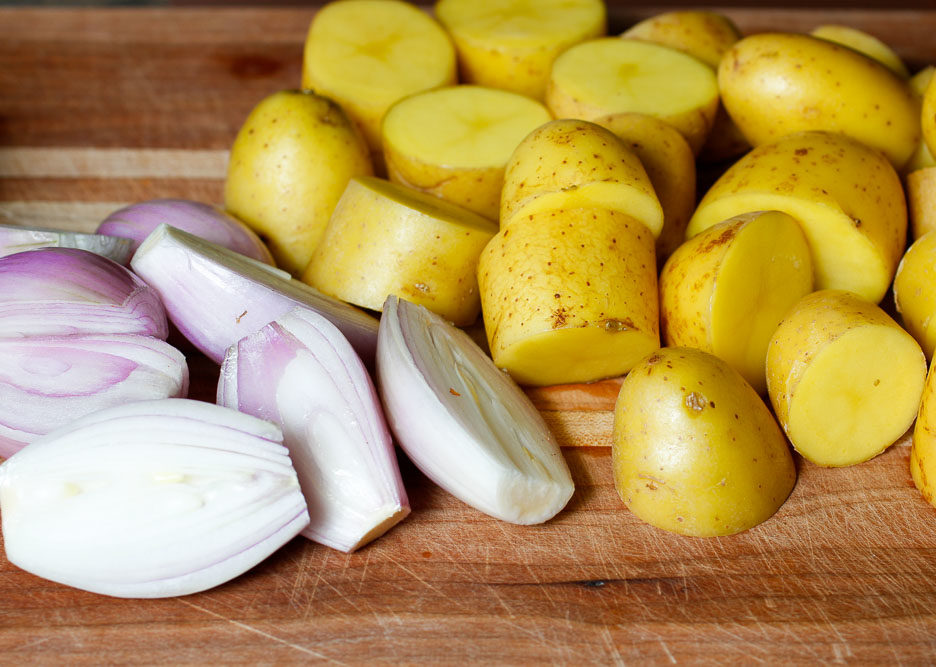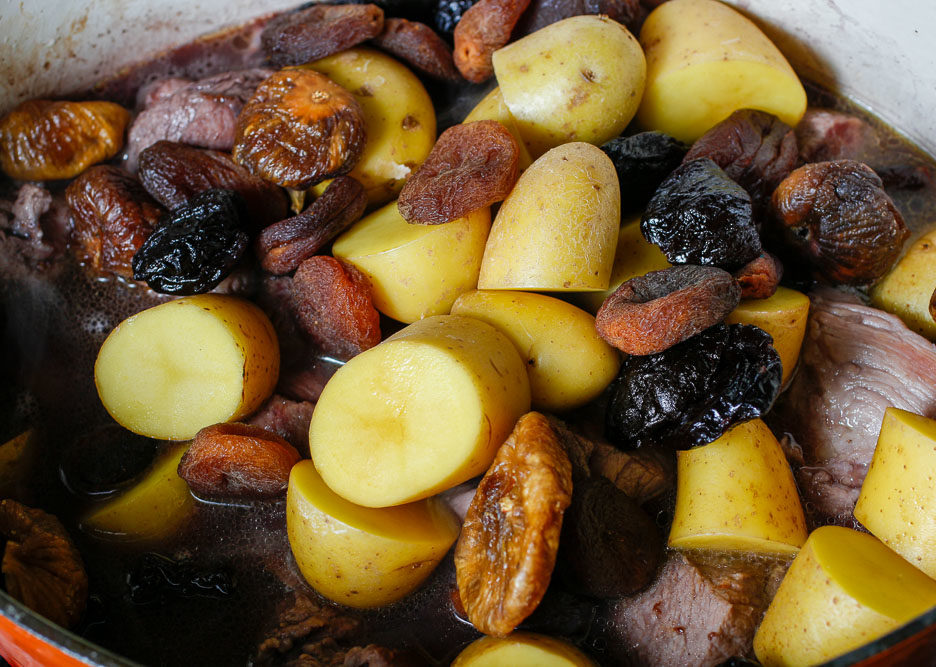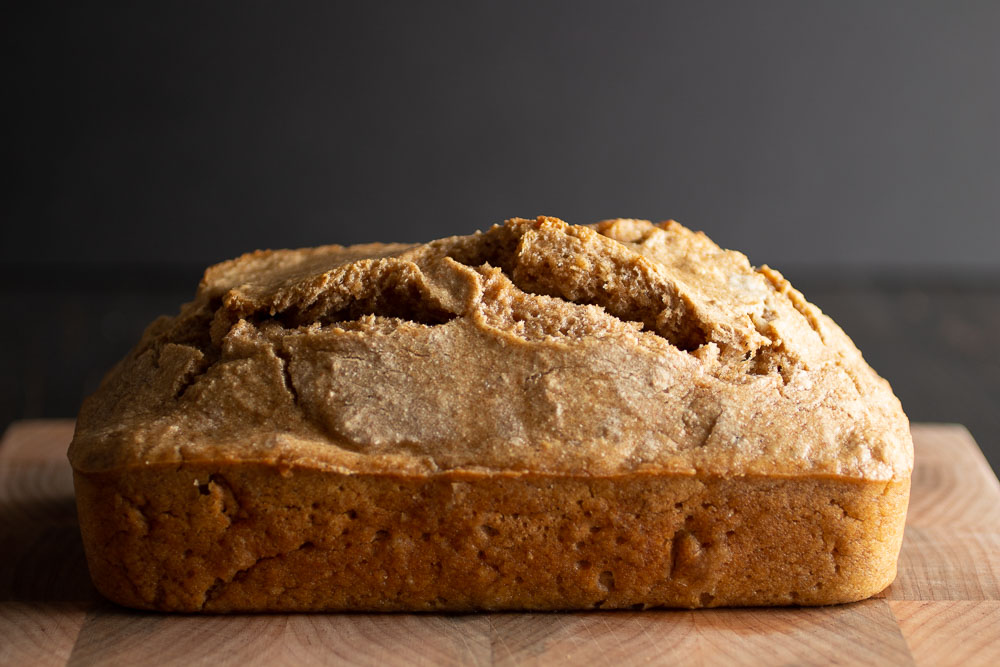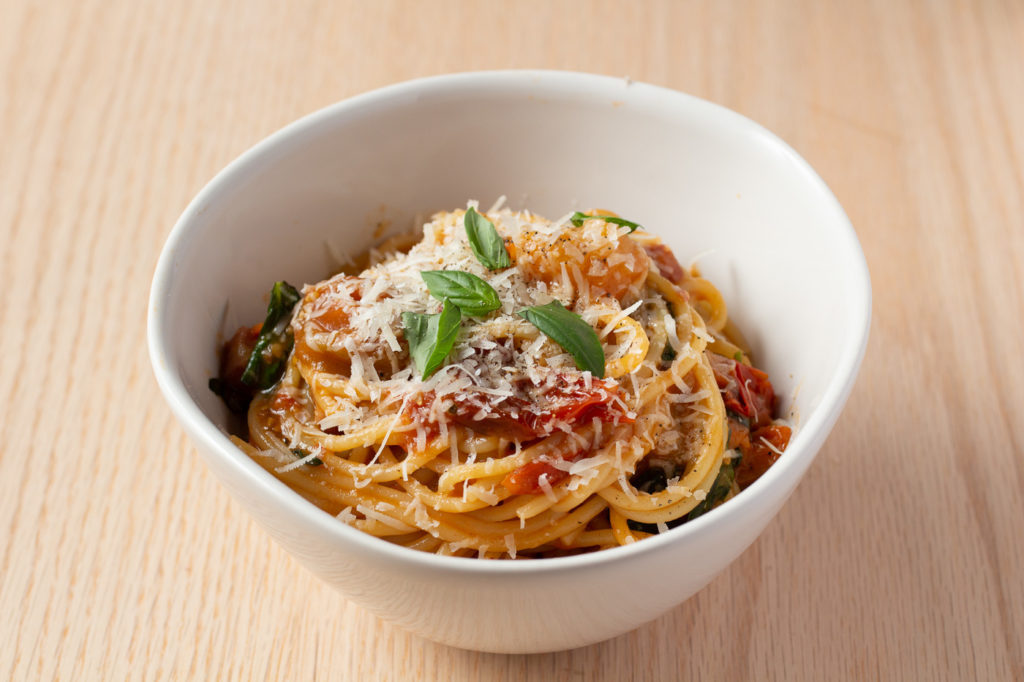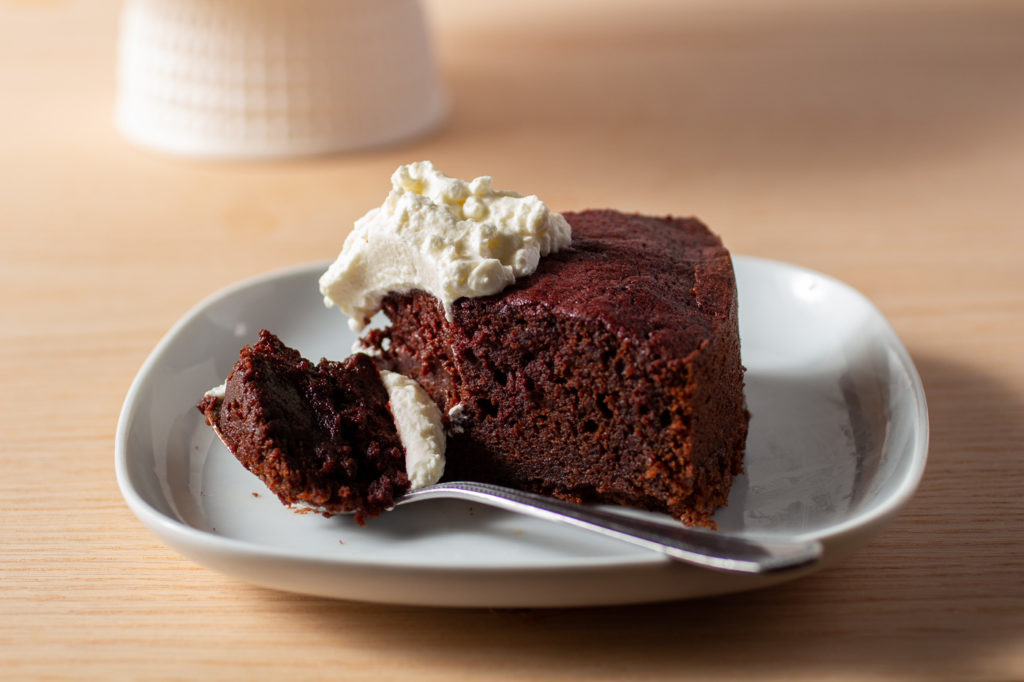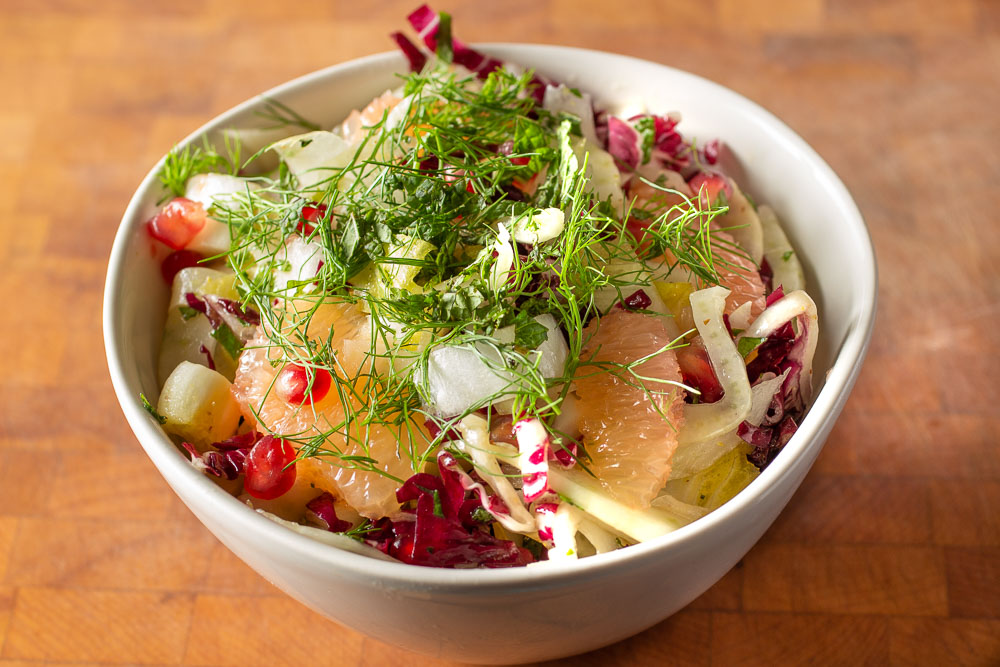
braised pork shoulder with figs and apricots
February is an awkward month. If February went to a house party with all the other months, I’m convinced it would make a weird joke about someone’s mom, spill wine on the carpet and disappear into the night without saying goodbye. It’s even awkward to spell—I still have to sound out Feb-roo-ary in my brain like I did when I was eight years old. And so, when we collectively have a case of please-remove-these-invisible-sandbags-from-my-ankles, I think it’s a good time for things cooked long and slow, for meat you can pull apart with a fork, for sauce that’s deep and sticky and meals that cook in one pot with minimal fuss. I turn, in these trying times, to the time-honoured combination of braised pork and fruit.
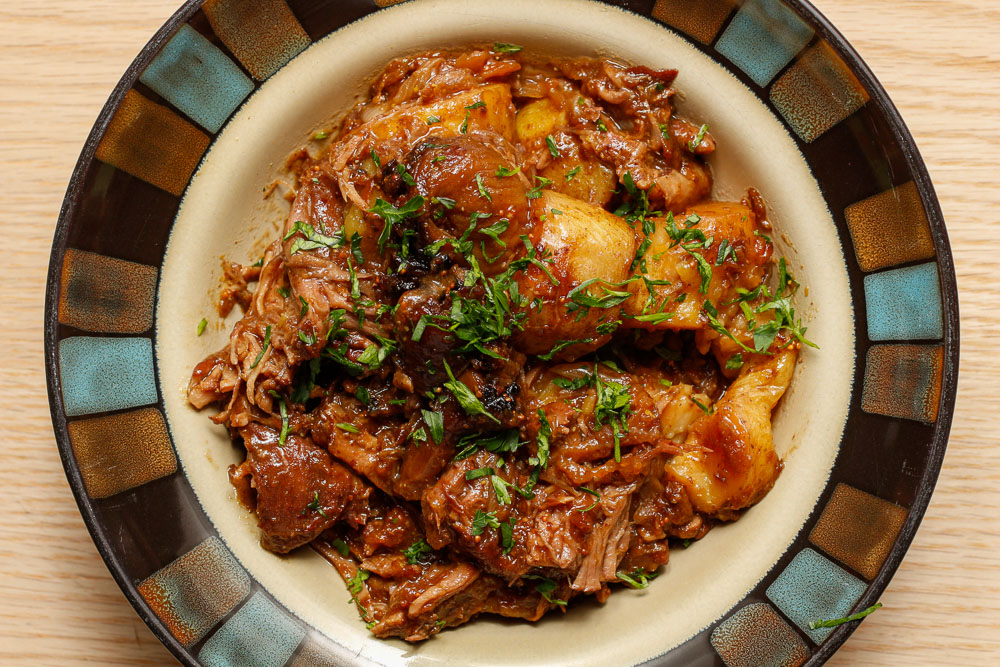
Pork and fruit have been dancing partners for a long time—at least since medieval Europe, when lords and paupers alike stewed pork with apples, prunes and such—and probably longer than that. You’ve probably had pork and applesauce. Maybe also ham and pineapple, or even pork loin stuffed with fruit. Pork is naturally a little sweet—fruit helps bring that out and cut through its richness. In return, pork lends fruit the heft it needs to become a meal.
There are so many things I like about this braised pork recipe: barely 30 minutes of hands-on time (most of which is just standing around waiting for the pork to brown), complex flavour with a relatively short ingredient list, and dried fruits that plump up in wine, butter and stock to become richer, drunker versions of their original selves (what a life). It’s adapted from Stéphane Reynaud’s excellent “One Knife, One Pot, One Dish”—something I’d highly recommend for Dutch oven enthusiasts like myself, and if you’re anywhere near as lazy as I am, an instant buy based on the title alone.
How well you (or your butcher) trim your pork shoulder of fat will have a big impact on the results—mind you, more fat isn’t necessarily a bad thing, but expect it to be approaching-overwhelmingly rich if you leave a lot on the outside. (Most of the marbled fat laced through the meat will melt into the liquid as it cooks). Another possible variation is in how much vegetable broth you use—an extra half cup will, naturally, yield a brothier result. There’s no wrong answer here: go as brothy or un-brothy as you like.
This is also a solid use of pork shoulder—a mercifully inexpensive cut that takes best to the long, slow braise it undergoes here. Given the two hours this needs in the oven for the meat to get fall-apart tender, this recipe isn’t exactly a weeknight throw-it-together type deal, but requires almost nothing besides time. You can definitely serve it with a salad—frisee with oranges would be nice—but with a little parsley, it’s pretty much perfect on its own.
pork shoulder 2 pounds, mostly trimmed of fat and cut into big pieces
shallots 3 large or 4 medium
unsalted butter 2 tablespoons
dried apricots 2/3 cup
dried figs 2/3 cup
prunes 2/3 cup
fingerling potatoes 4 cups, cut into big chunks
full-bodied red wine 1 1/4 cups
vegetable stock 1 1/4 cups
dijon mustard 1 tablespoon
a little chopped parsley, for garnish (optional)
kosher salt and black pepper
prep
Preheat the oven to 300F. Measure out all your ingredients, trim and cut the pork into large chunks (6-8 pieces for 2 pounds of boneless pork shoulder), halve the shallots lengthwise, and cut the fingerling potatoes into big pieces (halves or thirds, depending on how big they are).
braise
Melt the butter over medium-high heat in a Dutch oven or similarly sized oven-safe vessel. Add the pork and shallots, stir and season with a hefty pinch of kosher salt, and leave it alone till the pork is nice and golden brown on one side. (No need to brown both sides). Be patient—this can take up to ten minutes.
When it’s brown, pour in the wine and use a wooden spoon to scrape up any brown bits. Add the rest of the ingredients, season again with a generous amount of kosher salt and black pepper, stir, and pop in the preheated oven for two hours.
finish
Stir in the dijon mustard; taste for seasoning and adjust accordingly. Pull the pork apart with two forks (being careful not to scratch your Dutch oven). Serve with chopped parsley.

